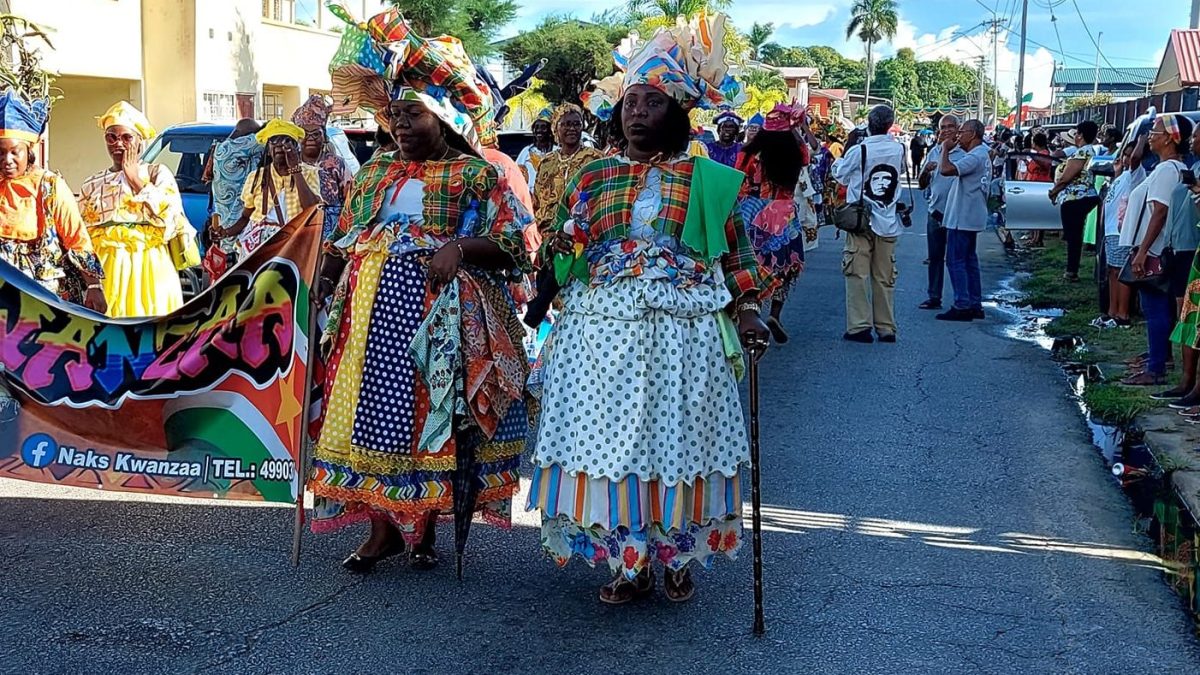Kotomisi of Suriname

In Sranantongo, kotomisi literally means “lady who wears a skirt.
‘Kotomisi’ refers to both the woman wearing a koto (skirt), it is a Creole costume. For Afro-Surinamese women, the way they dressed both during slavery and afterwards was bound by rules. It was set by law how the woman, man and children had to be dressed.
Before the abolition of slavery in 1863, the clothing of slave women consisted of a paantje, a breastplate, a short skirt and a pocket-shaped dress. This pocket-shaped dress, which was supposed to give the slave woman a “disfigured” appearance is said to be a creation of the jealous wives of white plantation owners.
Other accounts, on the contrary, tell that the koto is a post-slavery costume and thus unrelated to jealous plantation owners. The koto is still worn on festive occasions There are koto´s for different occasions, including the koto-dansi for a dance party, wedding koto, work koto, birthday koto and mourning koto.
The way the koto itself is worn can express a message. In party wear, the koto is tied up by means of a padded roll called a koi, which makes the koto extra wide, under the koto two petticoats are worn. Above that a shirt, empi, with a yak(i) over it and a matching headscarf the angisa
The angsia can be tied or folded in different ways. The method of folding carries a particular meaning, a well-known angisa binding style is “Let them Talk,” but other sayings (odo’s), life wisdom and warnings were also passed on with a particular binding style. During slave times, slave women were not allowed to walk with uncovered heads. Soon it was used as an instrument to pass messages.
Previously, the koto and angisa were associated with the creole working class, but today it is common for middle and elite class Creole women to organize a koto dance. This is a dance party in which various kotomisis are worn.
Would you like to rent a vacation home in Suriname? Then you have come to the right place at house rental Suriname! We have several detached houses for rent. www.huishurensuriname.nl
